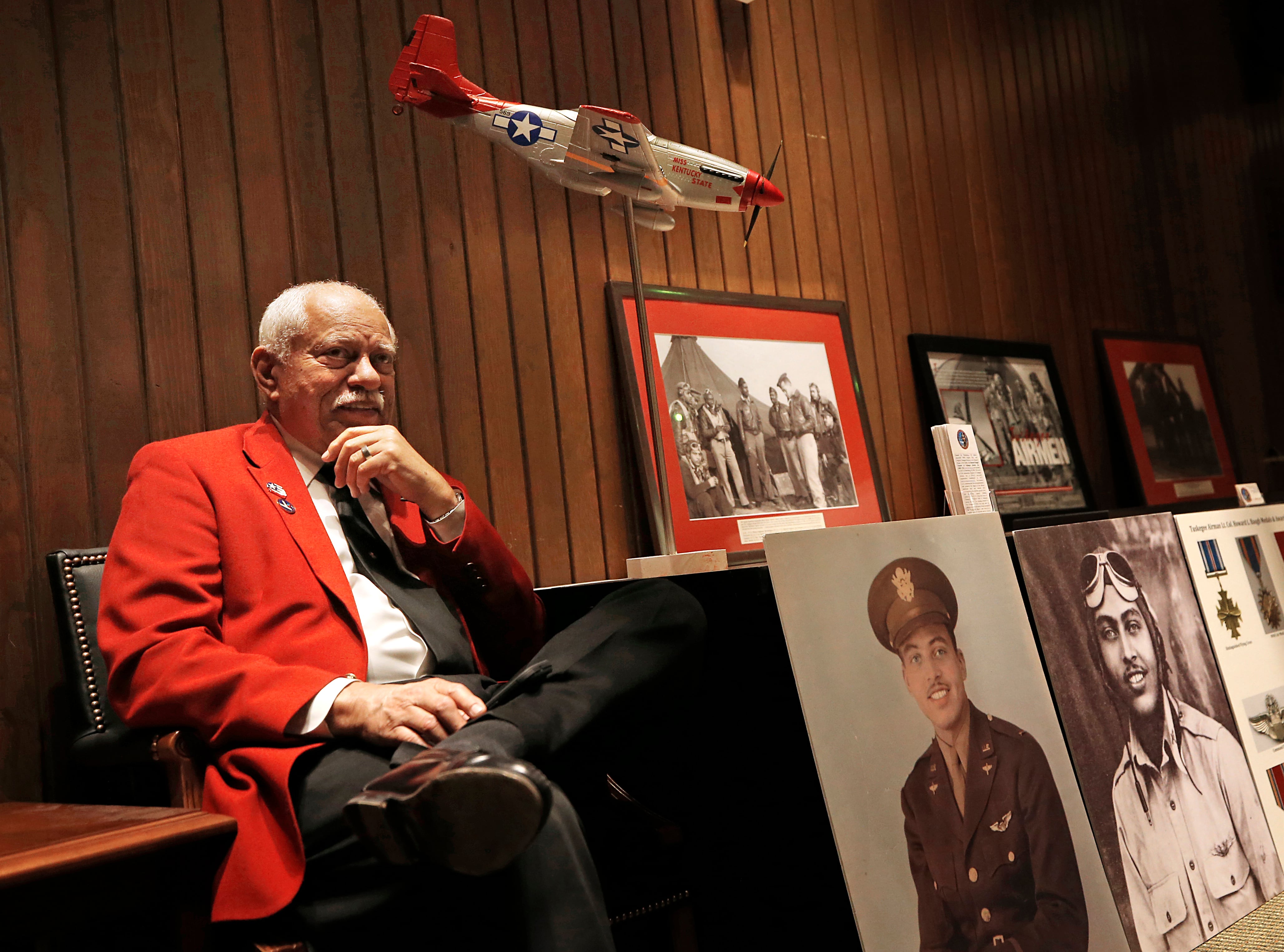DOVER, Del. — It was a challenge that turned into a dare that eventually led to the takeoff of one of the most momentous C-5A Galaxy flights out of Dover Air Force Base on Jan. 30, 1986.
Retired Col. William “Bill” Jordan, now 79, vividly remembers the sequence of events that led to the first all-Black aircrew of a C-5A cargo plane leaving Dover bound for Germany that day.
After all, he was chosen to lead the historic mission.
“The way it got started was I was chair of the Black History Month Committee that year and one of the members of that committee had suggested that we bring a R&B group down from Philadelphia and have a dance, and I was opposed to that,” Mr. Jordan said. “I said I didn’t think the base would go for that.
“So, a female NCO on the committee said, ‘They never go for anything. I bet they won’t go for an all-Black flight C-5 crew.’”
Mr. Jordan said he was kind of put in a difficult spot and he committed that he would ask then-Col. Walter Kross, who was Dover Air Force Base’s wing commander back then, if he would approve her idea.
Much to his surprise, Col. Kross OK’d the proposal and history was put into motion.
“I guess the thing that made it so memorable for me was the fact that Col. Kross had the fortitude to authorize that flight in the face of a lot of people saying that he was making a mistake,” Mr. Jordan said.
RELATED

So, he and 17 other Black airmen representing Dover AFB’s 3rd Squadron, 9th Squadron and Reserves, were selected and put into place to fly a routine mission to Germany in honor of Black History Month in February.
The purpose of the flight was to symbolize the role Black airmen played in national defense commitments.
In an article in The Airlifter, the base newspaper, published in 1986, then-Lt. Col. Jordan, who served as the flight commander, said, “Members of the crew wanted to fly an ordinary mission, not an ‘around the flagpole mission.’
“There aren’t any special events planned en route. The mission is a symbol of Black History Month, and we know it will inspire young Blacks to strive harder to achieve whatever their dreams may be.”
At the time, he also knew the flight would have its share of detractors.
“There are people who are going to try to turn this into something negative,” he said. “There will be comments that it’s tokenism or an attempt to segregate a crew. Neither statement is true.”
Little did Mr. Jordan and other members of the all-Black flight crew know at the time about the interest level that many had involving the flight, including a young Black airman at an air base in Incirlik, Turkey.
“The most memorable thing about the flight was the second leg, when we went into Turkey,” said Mr. Jordan. “There was an airman who couldn’t believe there was going to be an all-Black flight and he stayed up all night at the base in Incirlik, Turkey, waiting to see that C-5 come in and land.
“He was out on the flightline just looking to see the all-Black crew. He was a Black airman, so the fact that it meant so much to him and it meant so much to all the Air Force people that we ran across meant a lot to us.
“It was amazing. People were coming up to us and congratulating us and thankful that we did that flight.”
When he looks back on that flight today, there isn’t a whole lot that he would change, calling it an honor to be a part of history.
“We didn’t want it to be just a symbolic flight. We wanted it to be a normal mission,” Mr. Jordan said. “It was to show that on a day-to-day basis that we contributed to the regular Air Force mission — showing that we do this daily, and we can do this all the time.
“I think the biggest honor for me was to see the performance of the entire crew. Everybody on the crew did a fabulous job. It’s always a great honor to work with such a highly motivated and dedicated crew of people.”
Unfortunately, time is catching up to many who participated in the mission. Pilot Joe Lindsay died in January, and several others have also passed away over the years.
Their exploits are still remembered — including another flight by a second all-Black air crew that took place years after the inaugural flight.
On Feb. 24, 1999, there was a C-5 reunion and recognition luncheon for both the flights at Dover Air Force Base.
“If you ask me, it was a momentous flight,” said Mr. Jordan, who now lives in Spotsylvania, Virginia.
However, he said it wasn’t the most significant flight of his aviation career.
“My service in Vietnam might be more significant than that flight,” Mr. Jordan said. “My flying of air medical evacuations … One of my friends asked me what the most important mission I ever flew in the Air Force was, and I told her two missions where I saved two little girls who had been burned over 80% of their bodies, one down in New Orleans and one in Memphis, Tennessee.
“And the lady was shocked. She knew I had been down in Vietnam, and I’d done all that and the Black flight (at Dover) — that flight was very significant to me, but was it the most significant thing in my Air Force career? No.”




